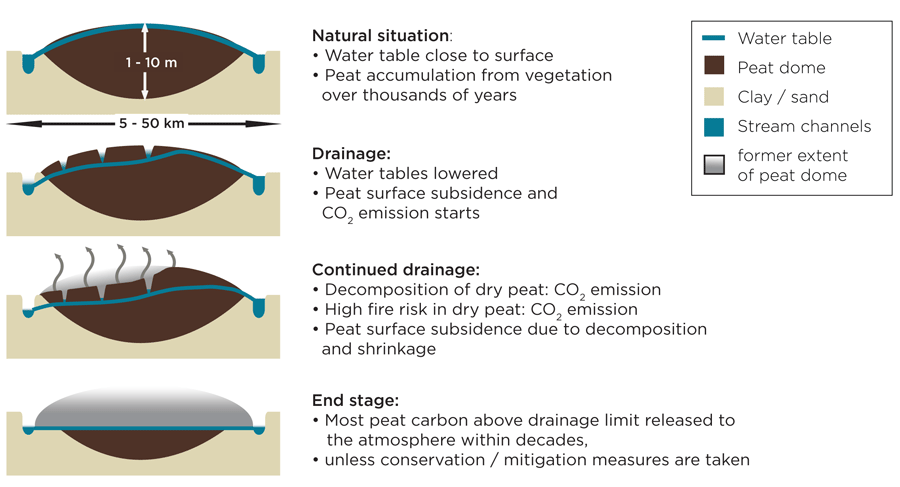White paper
Review of peat surface greenhouse gas emissions from oil palm plantations in Southeast Asia
Growth in palm oil production has been a key component of meeting growing global demand for vegetable oil, including for biodiesel, over recent decades. This growth has been accompanied by mounting concern over the impact of the oil palm business on tropical forests and peat swamp forests. Tropical peatland is one of Earth’s most efficient carbon sinks. Development of tropical peatland for agriculture and plantations reduces or, in most cases, removes the carbon sink capacity of the peatland system, with large carbon losses arising particularly from enhanced aerobic peat decomposition and the loss of any future carbon sequestration by the native peat swamp forest vegetation.
Recent publications have given have a wide range (19 to 115 Mg CO2-eq ha-1 yr-1) for emissions from peat degradation in palm plantations. In this paper, the authors undertake a rigorous assessment of the empirical foundations, accuracy and validity of emissions estimates, tracing values used back to the original publications and evaluating the approaches and methodologies employed. They find that dependency on a limited number of flux studies, combined with inappropriate upscaling, has resulted in systematic underestimation of GHG emissions from oil palm plantations on tropical peat.
The authors conclude that a value of 86 Mg CO2-eq ha-1 yr-1 (annualized over 50 years) represents the most robust currently available empirical estimate of peat CO2 emissions from OP and pulpwood plantations. For a shorter annualization, the emissions would be higher (see table).
The table below shows annualized values for peat carbon losses from plantations over various time scales, accounting for higher rates of emissions in the years immediately following drainage (values derived from Hooijer et al., 2011).
| No. years | Carbon loss (Mg CO2-eq ha-1yr-1) |
| 5 | 178 |
| 10 | 121 |
| 20 | 106 |
| 25 | 100 |
| 30 | 95 |
| 40 | 90 |
| 50 | 86 |
Revising underestimated emissions from peat degradation in the modeling of indirect land use change could have important consequences for assessing the emissions balance of biofuels. For instance, adopting the 20-year annualization given above alongside correcting for a more realistic percentage of palm expansion on peat would have increased the carbon intensity of palm oil biodiesel as modelled by Al Riffai et al. (2010) for the European Commission by over 30 gCO2-eq/MJ.

